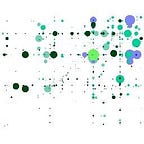Piketty figured it all out. I am going to quit my job.
What can we say for sure about Piketty’s “findings’’? The “profession’’ agrees with Piketty’s empirics: income inequality is increasing. They do not agree on the causes and there are many competing explanations for the rise in inequality. Piketty is one in a long line of people who have worked on this question for many years. He is one of the few that has written a book that has caught the imagination of the public.
The book is based in part on his earlier academic papers, some published in very good journals. That work is pretty interesting but ultimately he is only able to highlight patterns in the data. He has collected information on France, and documented how wages and wealth evolved over nine decades. Results are published in this paper.
He also conducted similar research on the States published here. He is able to construct a full series of income from 1901–1998 (there are issues of how well he does this). All these papers point out that inequality was kept at bay by high progressive taxation. That is all he can objectively say. If this was his only contribution I doubt he would have gotten his book published. This is good empirical work, but it’s not explaining anything. It’s documenting.
More recently (and closer to the publication of his book) he decided to take his work a step further. Piketty states in this paper that capital gains are the reason for increasing wealth to income ratios. This paper suffers from a number of data analysis problems that a starting applied microeconomist would immediately have picked on in a referee report. The problem is that Piketty uses an unrealistic and simplistic model to infer the values for important parameters such as the national savings rate and the rate of return to capital. Obvious questions are: what is a national savings rate and how is this computed? What is the unit of observation your averaging over? What are the assumptions that allow you to aggregate different savings rates across different income groups into a single number? The list is endless.
I spent years trying to show otherwise, and finally I said, ‘No, I can’t do it.’
The question of how income inequality occurs is important. No one has the answer and I doubt we will get it from a macroeconomist. However, Piketty does not even entertain other explanations. In the States one major contributor to inequality was race. James Heckman (an applied microeconomist and “Nobel” prize winner) pointed out that:
“Any careful look at the data actually shows a big break in the time series, showing changes in relative black economic status around the time of the passage of the 1964 Civil Rights Act. There is no way around that fact. I spent years trying to show otherwise, and finally I said, ‘No, I can’t do it.’ ”
This is precisely the type of applied (read data-driven) microeconomic analyses we need in order to understand complex dynamics of inequality. Piketty mentions none of these major changes. Neither does he mention how technological change can leave certain income groups behind, the credit constraints lower income groups face, the inability for some people to get checks cashed cheaply and so on. Piketty has not provided us with any further insights into the problems we face.
What’s the harm in his work? He sustains the myth of the economist as the grand theorizer who can explain all major problems of the world, when in reality all we can do is look at one country, one city, one market, one agent, at a time. This is slow, difficult and does not lead to sexy conclusions. Moreoever, Piketty focuses media attention on the “middle class’’ instead of worrying about the huge section of the population that is living in po2verty. I am pretty Rawlesian when it comes down to it: help those at the bottom and the rest will follow.
